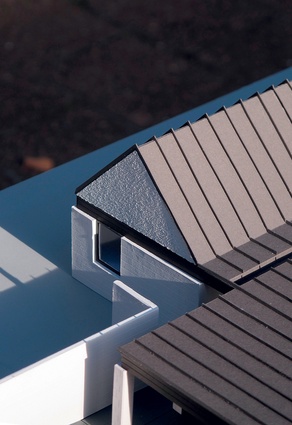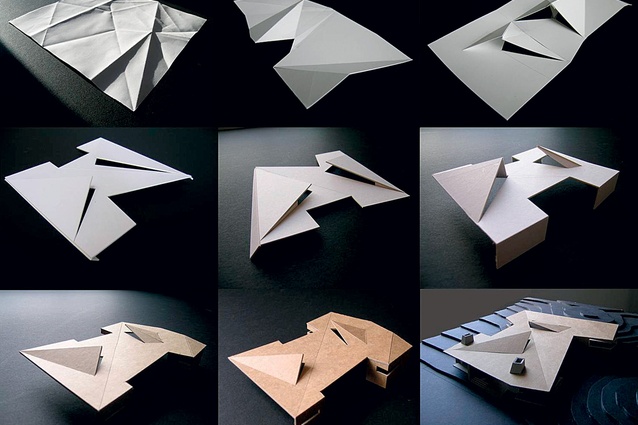The Model is in the Making
Model-making is considered a luxury for some architects. But these people are missing out. Models are not only a great way of understanding, and hence improving, your designs but they are also the best communication tool a designer can have. Nothing explains the intention, form, use and materiality of a piece of architecture like a well-crafted model.
But model-making isn’t just a professional skill, it’s a kind of architectural subculture with all the requisite eccentricity. There are rivalries, clashes of heartfelt opinion on matters that would seem trivial to outsiders, and serious competition among some proponents. It is also something of a traditional master-craft, still passed down from generation to generation by devoted practitioners who work to hone their skills over countless hours. Just like many craft guilds in days of yore, masters choose apprentices who will carry on the tradition and develop the skills. However, it’s not only scalpels and green cutting boards any more. Tradition is now held in tension with technical innovation. The adoption of contemporary digital fabrication techniques has introduced a whole new array of tools and techniques that model-makers can use; laser cutters, 3D printers, CNC routers and robotic arms have changed the type of models that are being made. It is worth noting that the digital hasn’t replaced the analogue, however. The most-skilled digital model-makers still require the old-school analogue tools to assemble their designs into useful models. Glue isn’t going out of fashion any time soon.
Anyone who has spent time in an architecture school can tell you, no two people make models the same way. Everyone has their own tricks: their own reasons for a glue preference and a different way of folding the making into the overall act of design. One thing that is constant, though, is that the precision of the model is still where the maker stamps their personality on the work.
In a field where the difference between the good and the great is often measured in microns, it is useful to consider how one model-maker is influenced by another, particularly within the local scene. Loose lineages start to form when you look at the practitioners who use modelling as a central part of their design work. Three architects who share such a lineage and have become central to the model-making scene in Auckland are Professor Andrew Barrie, Gary Lawson and Melanie Pau. Professor Barrie is an avid paper modeller who has drawn on the Japanese form of Okoshi-ezu (a kind of folded construction drawing) in the development of his design and academic work. Barrie’s work has influenced Gary Lawson, of Stevens Lawson Architects, who has in his own right developed a reputation for his considered use of modelling as a design tool. Apart from the two being connected through the usual professional linkages, they also have a joint protégé in Melanie Pau. Melanie is an apprentice of Barrie’s paper school of modelling, who is now continuing to refine her models after joining Stevens Lawson.
The three represent a contiguous lineage of model-making within Auckland, while each maintains their own precise approach. I spoke with each of them, to try and unravel how model-making has influenced their practice and how they approach their making.
When asked how they became interested in model-making, their answers were similar. Architecture school fostered an interest in making and exploring forms through models and this has naturally developed into professional practice. When asked about the sources of inspiration for this making, common threads start to show a development in the discourse.
Andrew Barrie
In the very early 1990s at the School of Architecture in Auckland, it was my last year of study and the dominant working and presentation method was very fine hand drawing. We spent hours hunched over drawing boards hatching our hearts out. Model-making was a bit out of fashion, particularly as a design rather than presentation method, and so, thinking myself a trendsetter, I decided it was something to explore.
Gary Lawson
Peter Wood helped me to develop a sketch model or design development approach to model-making at architecture school… and I remember being amazed by Andrew Barrie’s final-year models when I was in my early days at architecture school. I have also, for many years, found the Herzog & de Meuron design-development models really inspiring.
Melanie Pau
[I admire] Junya Ishigami’s models because of their playfulness, and I love how he manages to incorporate planting into his paper models. Terada Mokei is another Japanese model-maker who manages to add life to his models by the way he places the people figures that occupy them.
The way that model-making is incorporated into the practice of architecture also develops a common approach.
Andrew Barrie
It’s central. I move back and forth between drawing and modelling, particularly in the earlier stages of a project. I’ll make a model of each design option. I’ve developed a paper model-making method that is very quick, so when I’m working in the exploratory mode, I’ll make two or three models a day to go alongside the wee stack of drawings. My approach does tend to mean I like working with folk who are also very strong model-makers.
Gary Lawson
It’s ingrained in what we do but only in as much as drawing (sketching) or computer work is part of the process too; it’s really just another tool we use to explore and communicate our ideas. It changes from job to job so there is no ‘one way’ but there is always a loose model (or three) made early, alongside drawing and discussion, to explore loose ideas. Generally then, an accurate plan and section will be scratched out, and a more accurate model will be produced and rebuilt or refined from there until we are happy and ready to build a ‘final’ model for presentation. As the practice has grown, we have had a skilled model-maker on the team as I have less and less time to make the models; for example, we now have Melanie who, among her vast skill set, is an outstanding model-maker.
Melanie Pau
I usually start off sketching out ideas but model-making comes into the process very early on. Having something physical to look at is much more useful to me for understanding form and spatial relationships. As a student, I would use models both during the design process and to present the final design at the end… there are heaps of process models around the office as well as presentation models of the final designs. Model-making hasn’t really influenced the type of architecture I design but more vice versa. I’m always having to figure out new ways to model-make to get across what I want to demonstrate: for example, showing human occupation of a building or how nature and landscape will relate to a design.
Gary Lawson
Models have been hugely important to our design process since Nicholas [Stevens] and I started working together as it allows us to explore our ideas in three dimensions reasonably quickly and creatively during the design process. I think the models add a richness and sense of discovery to our design process. A well-made presentation model has become a very important part of our final presentation to our clients, too. I am certain that some of our designs would not have been accepted without the accompanying model we have given our clients.
The easy and cost-effective nature of digital modelling has resulted in many architects removing physical modelling from the way they work in favour of the virtual. But, for model-makers, the shift in technology offers new ways to develop their craft, while also adopting the digital.
Andrew Barrie
I use CAD to print models on cartridge paper, which are then cut and assembled by hand. The production cost of each model, labour aside, is about 15 cents.
Gary Lawson
We still make all our models by hand, apart from particularly tricky or detailed elements that might be laser cut. I like that our models are handmade and have a less-than-perfect quality about them, so we have avoided component-cut and assemble-type models. Also, the models are generally iterative and therefore subject to change and ‘tweaking’ during the construction. I think that making them by hand allows more freedom to experiment with the design along the way. These days, we probably build fewer interior models and components, such as fireplaces, by hand as we tend to make 3D computer models now for our interior detail design and presentation. Also, we have also presented some recent schemes with a computer model instead of a handmade model, which has been interesting, but I don’t think we would ever fully abandon the modelling process during design.
Melanie Pau
I used to do everything by hand but now I use the computer to draw things up first to use as templates, which makes everything just that little bit more accurate. I tend not to use the laser cutter for actually cutting the pieces of my models because I prefer the clean edge of a hand cut, but the laser cutter is very useful for etching materials and detail into card, which I could never do by hand.
As architects are increasingly trying their hands at work outside the traditional scope of professional practice, it is heartening that skills like model-making are still central to the practice of being a designer. The devoted purveyors of the craft show no sign of stopping and, one would hope, continue to pass down their skills to the next generation of architects.













